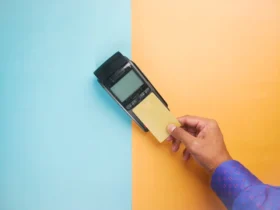Last Updated on October 13, 2024 by Daniele Lima
Understanding the standards for choosing the appropriate Baby Car Seat
The safety of young children is a non-negotiable priority in the daily lives of parents and guardians. Amid the challenges and joys of parenthood, the decision to choose a child car seat has special meaning.
A car seat is not just an accessory, but an important investment for your baby’s protection and happiness while driving.
In this article, we’ll look at the importance of making the right choice when choosing a car seat, taking a closer look at safety aspects, regulations, and important features to guide parents’ decisions. By deeply understanding the importance of this feature, we can ensure that every trip is safe and hassle-free for your loved ones.
Table of Contents
Safety first
The main function of a car seat is to ensure safety in the event of a traffic accident. Child restraint systems have evolved significantly over the years, incorporating advanced technologies to absorb impacts and protect young occupants. To provide effective protection, it is important to choose a high-quality, certified child seat.
Rules and standards

Some countries have specific regulations regarding the use of child seats in cars. It is important to know your local regulations and ensure that the chair you choose complies with these regulations. Safety certificates, such as Brazil’s INMETRO certificate, show that a product meets certain standards.
Failure to comply with these rules not only puts the child’s safety at risk but also exposes the offender to legal consequences. In addition to the safety certificate, it is important to follow specific instructions on how to correctly install a child seat in your vehicle. Each chair model may have specific instructions, and it is important to strictly follow these instructions to ensure the effectiveness of the device in the event of an emergency.
When choosing a child car seat, you should also consider the child’s weight and height. This is because different car seats are designed for specific age groups. Make sure the seat you choose is suitable for your child’s height and weight.
Another important habit is to regularly check the condition of your child’s car seat. Worn, damaged, or loose parts may affect the safety of the device. Follow the manufacturer’s recommendations for maintenance and replacement of parts as needed.
The position of the seats in the vehicle is also important. Follow the instructions in your car and child seat manual for proper installation. Many manufacturers recommend installing a seat in the rear seat of the vehicle to reduce the risk in the event of a collision. If you have any questions about the correct installation or use of a child seat, consult a qualified professional, such as a child safety technician or transportation specialist. Being informed and following all instructions will help keep your child safe while driving.
Development and Adaptation Phases
The safety of children in vehicles is a major concern and child seats play an important role. The design and fit of these devices have evolved over time to provide maximum protection when transporting babies and children in vehicles. The main steps in designing and customizing a child car seat are:
For newborns and babies:
Car seats for newborns are generally of the “infant comfort” or “infant comfort” type. It is designed to hold your baby in a reclined position and support their delicate head and neck. There is a 5-point seat belt to ensure adequate restraint. The seats face forward, providing greater protection in the event of a collision.
Convertible seat:
As your child grows, the car seat can be replaced to accommodate your child’s growth and weight gain. It can be carried first facing backward and then facing forward when the child reaches the appropriate weight and height.
Seats for preschool children:
Designed for older children who use larger convertible car seats. These are typically forward-facing seats with adjustable armrests and headrests.
Raised Seat (Height):
Recommended for children who have outgrown traditional car seats but have not yet reached the appropriate height to properly use a car seat belt. Raise the child so that the seat belt passes safely over the shoulders and pelvic area.
Integrated Child Seating and Restraint System (CRS):
Some vehicles are equipped with child seats integrated into the vehicle seat. There are also Child Restraint Systems (CRS) that offer specific safety solutions for each car model.
Correct installation

Child seats are only effective when correctly installed in the vehicle. Improper installation can cause many accidents. It is important to follow the manufacturer’s and vehicle’s instructions. Additionally, it may be advisable to seek guidance from a professional who specializes in child seat installation to ensure a safe and proper installation.
Choose the right car seat:
Make sure the car seat is appropriate for your child’s age, weight, and height. There are many different types of car seats for newborns, babies, and toddlers.
Location on board:
It is safest to install the car seat in the back seat of the vehicle, if possible. If you are unable to escape from the front seat, deactivate the front airbags.
Car Seat Orientation:
Follow the manufacturer’s instructions for rear-facing car seats for infants and toddlers, as recommended by child safety experts.
Seat belt attachment:
Pass the seat belt through the appropriate slots on the car seat, following the manufacturer’s specific instructions. Make sure the belt is tight and not loose.
Fixing with anchoring system (ISOFIX/LATCH):
If your car and car seat have an ISOFIX or LATCH anchorage system, use them correctly. A more secure and stable fixation is possible.
Seat Angle Adjustment:
Adjust the angle of the car seat according to the manufacturer’s instructions so that the child’s head is well supported. Use your seat belt correctly. Make sure the seat belt is properly tensioned and not too loose. When pressed, the car seat should move less than 2.5 cm in any direction.
Installation Test:
Perform a safety inspection after installation. Move the car seat around to make sure it is stable and secure. Make sure your baby is securely fastened in the car seat.
Adjust straps and clips accordingly:
The car seat belts and harnesses must be properly adjusted to ensure the child’s safety and comfort. Follow the manufacturer’s instructions for proper fit.
Periodic inspection:
Regularly check that your car seat is always installed correctly. Adjust as needed as your child grows.
Comfort and compatibility
In addition to safety, an important factor to consider is the child’s comfort. Relaxed children tend to be calmer during journeys, which reduces the driver’s attention to a minimum. Make sure the seat you choose is compatible with your vehicle and that the belts and cushions are adjusted properly to provide a comfortable environment for your child.
Soft Materials:
Baby seats often have soft padding to help keep your baby comfortable even on long trips.
Adjustable backrest:
Most chairs have an adjustable backrest to help your baby rest comfortably, especially while sleeping.
Ventilation:
Some models are designed with good ventilation to prevent the baby from overheating during use.
Fixation System:
The child seat must be compatible with the vehicle’s anchoring system. This includes the use of a seat belt or restraint system (e.g. Isofix).
Vehicle Model:
Check that your seat is compatible with your specific vehicle model. Not all seats fit perfectly in all vehicles.
Size and weight:
Make sure the seat fits in the backseat of your car and that your baby meets the recommended weight and height specifications for safe use of the seat.
Easy to Adjust:
An easy-to-adjust child seat makes installation easier and improves compatibility with a variety of vehicles.
Conclusion:
In short, choosing one car seat for children is a decision that goes beyond a choice of aesthetics. It is one step important to guarantee security and children’s well-being while driving. By investing time in researches that consider factors such as security, regulation, an internship of development, adjustment adequate, and comfort, parents and caregivers make one contribution significant for protect as your most precious lives.
Given all of this, choosing a car seat should be seen not just as a task, but also as an opportunity to protect and nurture those who trust our guidance. With every safe journey, we pave the way to a future where child safety is the gold standard and every child can explore the world with confidence, knowing they are protected by the responsible care of their loved ones.
Baby Car Seat – FAQ:
When is my baby too big for infant car seat
If your child exceeds the weight or height limits specified by the car seat manufacturer, your child is too big for an infant car seat. Infant car seats are generally designed for babies up to 13.6 kilograms (30 pounds) or 76 centimeters (30 inches). Be sure to check the specific instructions in your car seat manual.
Exceeding these limits may affect the safety of the seat and make it less effective to protect your child while driving. Suitable for toddlers and toddlers, switching to a booster seat ensures your child’s safety and comfort as they grow. To ensure proper protection, always make sure the new car seat is suitable for your child’s current weight and height.
When can baby face forward in car seat
Babies can sit forward-facing in the car seat if they meet the safety criteria and minimum age, weight, and height requirements specified by the manufacturer’s product seat. Most experts, including the American Academy of Pediatrics, recommend that children be kept in car seats until they are at least 2 years old or until they reach the maximum weight or pressure allowed by the seat manufacturer.
The rear seat provides better support for the child’s head, neck, and spine in the event of an accident. When switching to a forward-facing seat, make sure the seat is adjusted correctly and appropriately for your child’s safety.
How much is a car seat for a baby
Baby seat prices can vary greatly depending on the brand, features, and type of the seat. The average price of an infant car seat is between $50 and $300. Basic models that meet safety standards but lack additional features are at the lower end of the range. Mid-range options include more comfort and better materials and generally cost between $100 and $200. The best models often have the most advanced safety equipment, padding addition, and repair equipment and can cost $200 to $300 or more. It is important to choose a car seat that meets safety standards, fits your budget, and provides adequate protection for your child.











Leave a Reply